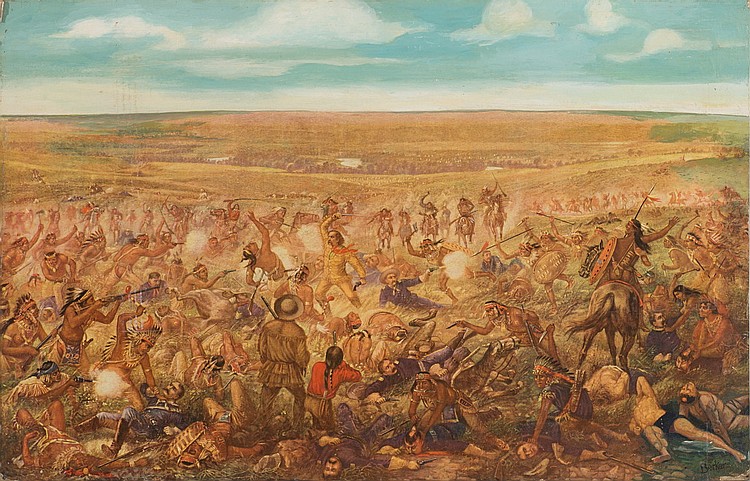I was born in 1952 and was 6 or 7 years old when I first became aware of the Battle of the Little Bighorn. No, it wasn’t from a movie, although I did see Sal Mineo portraying a Sioux survivor of that June 1876 battle in Walt Disney’s “Tonka”at about that time.
What did it was a painting hanging on the living room wall of one of my father’s more interesting friends in Palisades, New York. The picture shocked me because it showed dead and dying soldiers — some already stripped of their uniforms, some in the process of being scalped — and more scary Indians than a little boy could shake a toy rifle at. I had more than one related nightmare. I never saw stuff like that on TV’s “The Lone Ranger” or “Broken Arrow.”
GET HISTORY’S GREATEST TALES—RIGHT IN YOUR INBOX
Subscribe to our HistoryNet Now! newsletter for the best of the past, delivered every Monday and Thursday.
My family soon moved to Ohio, and, in the 1960s, dying no longer seemed like something that just happened in the dangerous but exciting Wild West. In 1967, that friend of my father’s died from a gunshot wound while covering the Six-Day War in the Middle East for NBC News. By then I had forgotten his face, but I never forgot the gory painting that once hung in his house: mutilated bodies all around a buckskin-clad, sword-wielding figure.
That figure was of course Lt. Col. George Armstrong Custer, who in real life didn’t carry a sword into battle or for that matter tote such a big belly. As a teenager I knew who Custer was and I knew he and his 7th Cavalry command met their end at a place called the Little Bighorn, somewhere in the far-off West. I could still see that painting when I closed my eyes, but I had no idea its name or who created it.
It wasn’t until 1994, the year before I became editor of Wild West, that I at last shed some light on the most haunting, if grotesque, painting of my youth. For the April issue that year I wrote “Custer’s Art Stand,” at the request of William M. Vogt, who had been editor of the magazine since its inception in 1988. The subhead reads: “The Last Stand lasted only about an hour, but more than 2,000 related drawings and paintings have helped create a lasting impression.”
No, I didn’t study all that Custer/Little Bighorn artwork, but out of the paintings I did see, one made by far the greatest impression. There was the slightly chubby Custer standing tall, if a bit woodenly, ready to swing his sword; blue-coated soldiers in dire distress; and rampaging Indians, not one of whom looked anything like Sal Mineo’s White Bull in “Tonka.”It was the painting from the living room wall.
Here’s what I found out. Cassilly Adams (1843-1921) completed a painting called “Custer’s Last Fight”in 1886. Several years later, F. Otto Becker (1845-1954) painted a smaller version of Adams’ work for a color lithograph, leaving most of the principal figures in place but adding a more realistic background (the Little Bighorn River valley instead of a mountain) and some out-of-place African-looking shields for the fierce American warriors.
The main Adams painting was destroyed by a fire in 1945, but Becker’s version has lived on thanks to Anheuser-Busch, which printed a million copies that found their way onto the walls of bars, restaurants, bus terminals and one 1950s living room in Palisades, New York.
A few years earlier, Robert Taft, one of the first individuals to seriously study Last Stand art, wrote, “A careful survey of the lithograph is enough to give a sensitive soul a nightmare for a week.”
And in at least one case, for most of a lifetime.
historynet magazines
Our 9 best-selling history titles feature in-depth storytelling and iconic imagery to engage and inform on the people, the wars, and the events that shaped America and the world.


